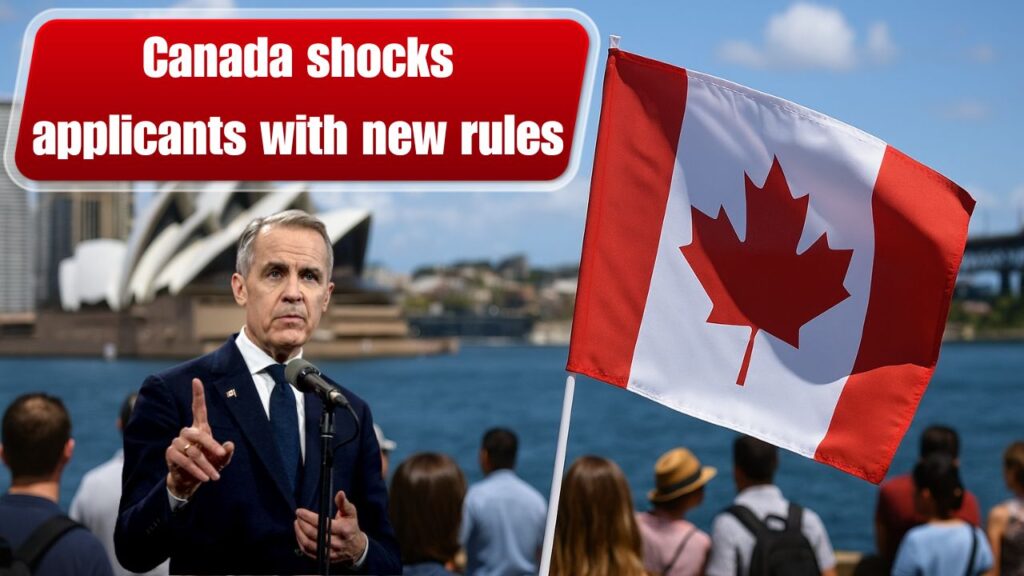Canada Immigration Rules 2025 – Canada’s immigration landscape is set for a major transformation in 2025 as the government introduces new policies to simplify pathways for skilled workers, students, and families. The latest updates aim to make immigration more transparent, efficient, and responsive to the nation’s labor demands. With global interest in moving to Canada rising each year, these fresh changes are expected to impact Express Entry draws, work permits, and family sponsorships. Understanding these updates is crucial for anyone planning to immigrate to Canada in 2025 and beyond.

New Canada Immigration Rules 2025 for Applicants
The new Canada Immigration Rules 2025 focus on strengthening pathways for economic migrants while maintaining strict integrity standards. The Immigration, Refugees and Citizenship Canada (IRCC) has announced category-based selections for Express Entry draws, targeting in-demand professions such as healthcare, construction, and IT. Additionally, the government will prioritize applicants with strong French language skills to support bilingual growth across the nation. These new measures will ensure a fairer selection process while addressing critical labor shortages in Canada’s economy.
 Senior Driving Rule Change October 2025 – Canada Drivers 65+ Face New Mandatory Test Rules
Senior Driving Rule Change October 2025 – Canada Drivers 65+ Face New Mandatory Test Rules
Canadian Immigration System Updates and Eligibility Changes
Under the revised Canadian immigration system, eligibility criteria for permanent residency have been updated to favor younger, skilled, and adaptable applicants. The minimum Comprehensive Ranking System (CRS) score is expected to fluctuate between 470 and 500 in 2025, depending on occupation and category. Furthermore, new biometric and background check timelines have been introduced to reduce processing delays. Family sponsorship programs will now have streamlined digital submissions, ensuring that applicants experience faster decisions and improved transparency across Canada’s immigration network.
| Program Name | Key Change in 2025 |
|---|---|
| Express Entry | Category-based draws for healthcare, IT, and trades |
| Family Sponsorship | Digital submissions and faster processing |
| Study Permit | Stricter financial requirements and proof of funds |
| Work Permit | New pathways for critical occupations |
| Permanent Residency | Updated CRS score ranges and provincial nominations |
Pathways and Opportunities Under Canada’s 2025 Immigration Plan
Canada’s 2025 Immigration Plan introduces several new pathways aimed at attracting global talent and retaining international graduates. The Atlantic Immigration Program and Provincial Nominee Programs (PNPs) are receiving higher quotas to support regional economic development. Applicants in sectors such as healthcare, clean energy, and advanced manufacturing will have increased chances of selection. The Canadian government’s long-term vision focuses on sustainable population growth, rural development, and inclusive opportunities for families who aspire to build their future in Canada.
 $1,647.34 Canada Survivor Allowance 2025 – Seniors Rejoice as October Payments Begin Nationwide
$1,647.34 Canada Survivor Allowance 2025 – Seniors Rejoice as October Payments Begin Nationwide
Canada’s Updated Visa and Residency Framework for Foreign Applicants
The updated visa framework in Canada for 2025 ensures smoother transitions for newcomers from temporary to permanent status. IRCC has introduced a points incentive for international students who have studied in Canada for over two years, along with a simplified process for work permit extensions. These enhancements aim to make Canada a global hub for education, innovation, and economic growth while ensuring immigrants integrate successfully into Canadian society and contribute effectively to its diverse communities.
Frequently Asked Questions (FAQs)
1. What are the main highlights of Canada’s 2025 immigration rule changes?
The main updates include category-based Express Entry draws, new financial requirements for study permits, and faster digital processing for sponsorships.
2. Who benefits the most from Canada’s new immigration system?
Skilled workers in healthcare, construction, IT, and French-speaking applicants are among the biggest beneficiaries of the new immigration framework.
3. Has the CRS score requirement changed for Express Entry 2025?
Yes, the CRS score range may fluctuate between 470 and 500 based on occupation-specific draws and regional needs.
4. How will these updates affect international students in Canada?
International students will face updated proof-of-funds requirements but will also gain easier pathways to permanent residency after graduation.


